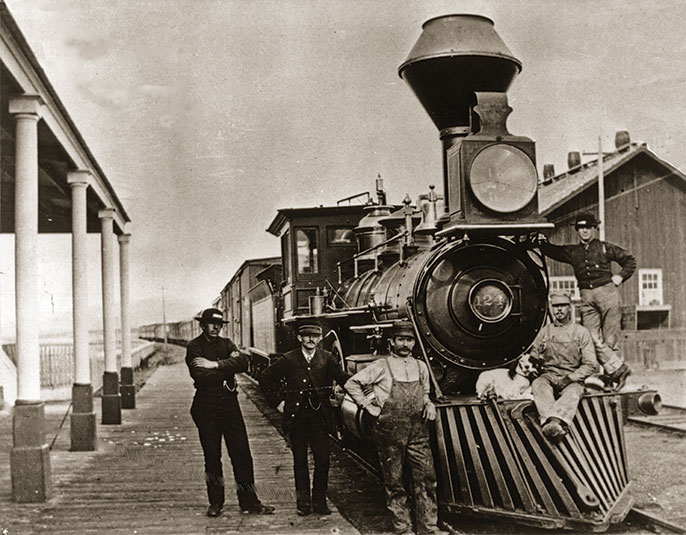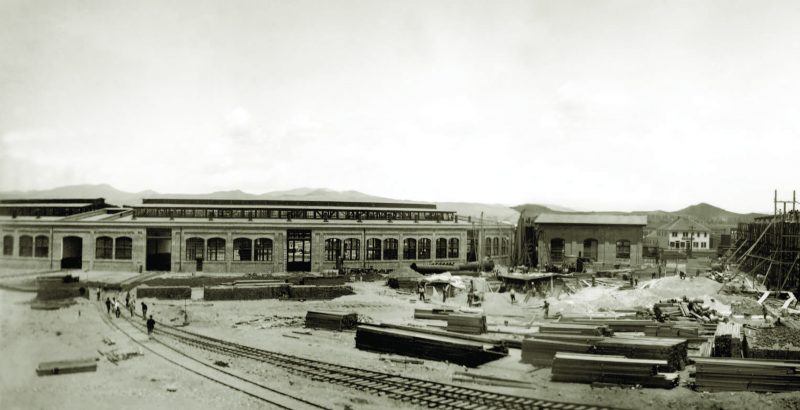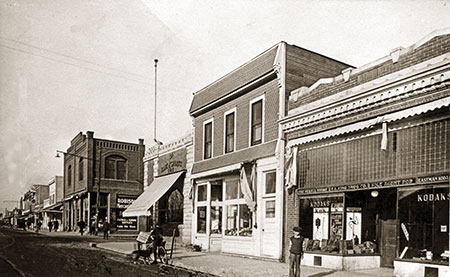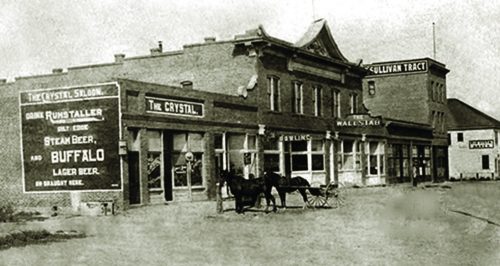Railroad Town
May – June 2014
Established as a railroad town on the swamps east of Reno, this Nevada community has shimmered for more than a century.
BY ERIC CACHINERO | May/June 2014
 Although Sparks is often overlooked in the annals of Nevada history, the story of the development of this railroad town is as strong as the steel from which its tracks were forged. In its early years, the town—the result of an exodus from Wadsworth—relied solely on the commerce and jobs provided by the railroad company that created it. Boasting the largest railway roundhouse in the world at the time of its inception in the early 1900s, Sparks’ growth picked up steam throughout the decades, fashioning the quaint, lively community that exists today.
Although Sparks is often overlooked in the annals of Nevada history, the story of the development of this railroad town is as strong as the steel from which its tracks were forged. In its early years, the town—the result of an exodus from Wadsworth—relied solely on the commerce and jobs provided by the railroad company that created it. Boasting the largest railway roundhouse in the world at the time of its inception in the early 1900s, Sparks’ growth picked up steam throughout the decades, fashioning the quaint, lively community that exists today.
I HEAR THE TRAIN A COMIN’

Railway transportation in Nevada was flourishing in the early 1900s, and with the influx of trains came the need for expansion. In 1902, the Southern Pacific Railroad Company shortened and straightened its lines across the Forty Mile Desert, eliminating Wadsworth, the division point at that time. This move created the necessity for a new division point, with Reno being considered a candidate for the relocation. However, Reno’s high real estate costs caused Southern Pacific to reconsider its new division point location. Rather than ante up for the real estate, the company instead settled for the swampy, flood-prone area just east of Reno.
According to an online article published by the Sparks Museum & Cultural Center, the Southern Pacific Railroad Company used 334 rail cars and personnel to fill the swampy area with dirt and gravel. After six months of hauling and spreading new ground, the average elevation of the site was raised by 18 inches.
From 1903-1904 (though some sources claim as early as 1902), construction of the railway roundhouse and new railway facilities was underway. Because employees of the previous division point in Wadsworth wanted to follow their jobs, many made the decision to move along with the railway. A section of land west of the roundhouse was designated as a living quarters for railway workers, and soon began the mass migration from Wadsworth to the newly created railroad town.
THE RAILWAY EXODUS

News of the location change dealt a stern blow to the future and prosperity of Wadsworth. Long-time residents were reluctant to abandon their homes, but their livelihood was dependent on the railroad.
In early July 1904, practically the entire town of Wadsworth picked up and moved to its new location. Personal belongings—including everything from pets and livestock to trees and shrubs—were packed onto railway cars for the move. Entire homes were cut into sections and loaded on Southern Pacific flat cars for transportation, free of charge by the company.
In a matter of weeks, Wadsworth essentially became a ghost town. According to the Nevada State Archives, the population of Wadsworth in 1900 was 1,309, and in 1910, it had dropped to a meager 250. As quickly as Wadsworth had been abandoned, however, the new city—still lacking a proper name—began to grow.
There were several designations that began to take form while the city was in its early stages. New Wadsworth, East Reno, and Harriman—a candidate designed to honor the president of the Southern Pacific Railroad Company, Edward H. Harriman—all became prospects for the town’s name. After interested parties failed to agree, the name of Nevada’s governor at the time, John Sparks, was suggested and it stuck. According to the Sparks Museum & Cultural Center, Sparks was officially incorporated on March 15, 1905.
CHUGGING ALONG
 Business in Sparks remained relatively quiet throughout the following decades. The roundhouse and accompanying businesses served as the central employer and revenue generator for Sparks for 54 years, before the advent of the diesel locomotive led to the demise of steam locomotives.
Business in Sparks remained relatively quiet throughout the following decades. The roundhouse and accompanying businesses served as the central employer and revenue generator for Sparks for 54 years, before the advent of the diesel locomotive led to the demise of steam locomotives.
In the 1950s, Sparks began to change. Subdivisions began springing up in the grazing lands northeast of the city. With the railroad now playing a diminished role, Sparks began to transform into a residential community. In the 1970s, warehousing and manufacturing plants were constructed on the south end of the city, giving Sparks a network of new roads.
The city continued to develop and expand through the ‘80s, seeing its first high-rise hotel and casino completed in 1984. Soon after it was constructed, John Ascuaga’s Nugget became a bastion of gaming and hospitality in Sparks.
Then, in 1997, Mother Nature delivered a surprising new recreation area to the city. Helms Pit—a gravel pit more than 100 feet deep in east Sparks that had been used to supply the city with millions of tons of rock for road and construction projects—was at the mercy of torrential rain. The rain brought some of the highest recorded flooding in the area’s history, which filled up the gravel pit and subsequently created the Sparks Marina. The unexpected marina has given rise to recreation in the area, including fishing, kayaking, and sailing.
Now established as a charming residential community, Sparks continues to expand and transform. Though tracks certainly still wind across its surface, the city is now far detached from the days when it relied on the railroad to support its existence.
